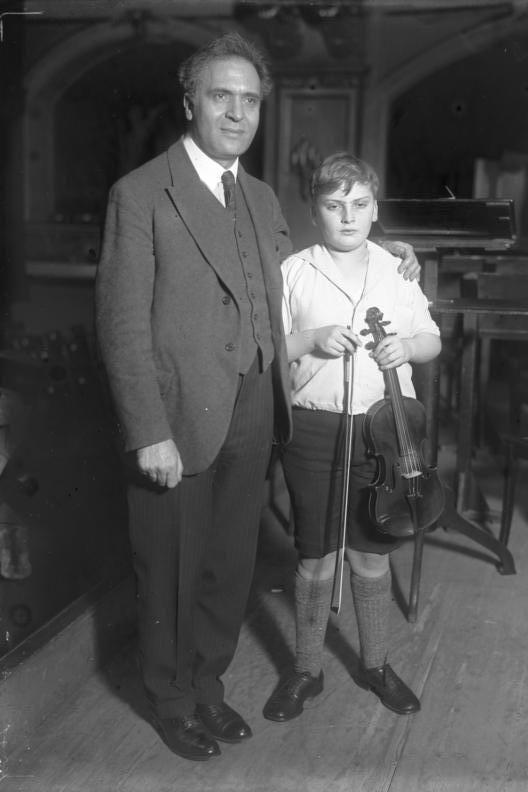|
Ondřej Kyas
Ondřej Kyas (* 14 April 1979 Boskovice) is a Czech composer and musician. Musical activities Ondřej Kyas graduated in Czech and Musicology from Masaryk University, Brno, Czech Republic. He is a co-founder and composer of thEnsemble Opera Diversa He has written five full-length operas in Czech, ''Pickelhering 1607 aneb Nový Orfeus z Bohemie'' (Pickelhering 1607 or The New Orpheus of Bohemia, 2007), ''Společná smrt milenců v Šinagawě'' (The Strange Suicide of Two Lovers in Shinagawa, 2009), ''Dýňový démon ve vegetariánské restauraci'' (The Pumpkin Demon in a Vegetarian Restaurant, 2010), ''Ponava (Zmizelé řeky)'' (Ponava: The Lost Rivers, 2013) and ''Čaroděj a jeho sluha'' (The Conjuror and his Slave, 2016), as well as numerous shorter pieces. He has also performed as a member of the following alternative and rock bands: * ''Baron Obkrokin'' (1992-1996) * ''Lunochod'' (c1995-2000) * ''Nechere'' (c2001-2003) * ''Hajzli'' (c1999-2001) * ''U-Musik'' (c2004-2006) ... [...More Info...] [...Related Items...] OR: [Wikipedia] [Google] [Baidu] |
Boskovice
Boskovice (; german: Boskowitz) is a town in Blansko District in the South Moravian Region of the Czech Republic. It has about 12,000 inhabitants. The area of the historic town centre, Jewish quarter, château complex and castle ruin is well preserved and is protected by law as an urban monument zone. Administrative parts Villages of Bačov, Hrádkov, Mladkov and Vratíkov are administrative parts of Boskovice. Geography Boskovice is located about north of Brno. It lies on the border of the Boskovice Furrow and Drahany Highlands. The Boskovice Reservoir is largely located in the municipal territory. The reservoir lies on the river Bělá which flows through the eastern part of the town and the southern part of the territory. History Boskovice was probably founded in the 13th century as a market village. The first written mention of Boskovice is from 1222, when the lord Jimram of Boskovice was listed as a witness in a deed of the King Ottokar I of Bohemia. The Boskovice Castle ... [...More Info...] [...Related Items...] OR: [Wikipedia] [Google] [Baidu] |
Masaryk University
Masaryk University (MU) ( cs, Masarykova univerzita; la, Universitas Masarykiana Brunensis) is the second largest university in the Czech Republic, a member of the Compostela Group and the Utrecht Network. Founded in 1919 in Brno as the second Czech university (after Charles University established in 1348 and Palacký University existent in 1573–1860), it now consists of ten faculties and 35,115 students. It is named after Tomáš Garrigue Masaryk, the first president of an independent Czechoslovakia as well as the leader of the movement for a second Czech university. In 1960 the university was renamed ''Jan Evangelista Purkyně University'' after Jan Evangelista Purkyně, a Czech biologist. In 1990, following the Velvet Revolution it regained its original name. Since 1922, over 171,000 students have graduated from the university. History Masaryk University was founded on 28 January 1919 with four faculties: Law, Medicine, Science, and Arts. Tomáš Garrigue Masaryk, pro ... [...More Info...] [...Related Items...] OR: [Wikipedia] [Google] [Baidu] |
Pickelhering
Pickelhering or Pickelhäring was the nickname given to the comic stock character or stage buffoon in English comedy troupes that travelled through Germany in the 17th century. The term literally meant "pickled herring". As with ''wurst'' ("sausage") in the name, Hanswurst, the figure of fun in 18th century German travelling theatres, or ''potage'' ("soup") in the name, Jean Potage, its French equivalent, the name refers to the everyday fare of the common people as opposed to the fine food of court society. ''Pickelhering'' is thus a servant figure in contrast to the high-ranking characters of the ''Haupt-und-Staatsaktions'', the German dramas performed by such theatres. The name also alludes to the greediness that has characterized comic characters since Aristophanes. History Andreas Gryphius has a ''Pickelhering'' appear in his play ''Absurda Comica oder Herr Peter Squentz'' (1658) as "the king's comic advisor". In 1649, ''Pickelhering'' appears as a named character in Germ ... [...More Info...] [...Related Items...] OR: [Wikipedia] [Google] [Baidu] |
Janáček Academy Of Music And Performing Arts
The Janáček Academy of Music and Performing Arts ( cs, Janáčkova akademie múzických umění v Brně; abbreviation in Czech: JAMU) is a public university with an artistic focus in Brno, Czech Republic. It was established in 1947 and consists of two faculties: the Faculty of Music and the Faculty of Theater. Background The Janáček Academy of Music and Performing Arts was established on 12 September 1947 and is named after classical composer Leoš Janáček. Following the collapse of the Czech communist government in 1989, music and theatre faculties were re-established, a number of professors who had been unable to teach were brought back, young teachers were admitted to the staff, new fields of study were introduced, and foreign contacts were initiated. The institution soon gained wide recognition. Honorary doctorates have been awarded to pianist Rudolf Firkušný (a native of Brno), poet Ludvík Kundera, playwright Václav Havel, and poet and actor Jiří Suchý J ... [...More Info...] [...Related Items...] OR: [Wikipedia] [Google] [Baidu] |
Everyman (15th-century Play)
''The of Everyman'' (''The Summoning of Everyman''), usually referred to simply as ''Everyman'', is a late 15th-century morality play. Like John Bunyan's 1678 Christian novel ''The Pilgrim's Progress'', ''Everyman'' uses allegorical characters to examine the question of Christian salvation and what Man must do to attain it. Summary The will is that the good and evil deeds of one's life will be tallied by God after death, as in a ledger book. The play is the allegorical accounting of the life of Everyman, who represents all mankind. In the course of the action, Everyman tries to convince other characters to accompany him in the hope of improving his life. All the characters are also mystical; the conflict between good and evil is shown by the interactions between the characters. Everyman is being singled out because it is difficult for him to find characters to accompany him on his pilgrimage. Everyman eventually realizes through this pilgrimage that he is essentially alone, de ... [...More Info...] [...Related Items...] OR: [Wikipedia] [Google] [Baidu] |
Joseph Roth
Moses Joseph Roth (2 September 1894 – 27 May 1939) was an Austrian journalist and novelist, best known for his family saga ''Radetzky March'' (1932), about the decline and fall of the Austro-Hungarian Empire, his novel of Jewish life ''Job'' (1930) and his seminal essay "Juden auf Wanderschaft" (1927; translated into English as ''The Wandering Jews''), a fragmented account of the Jewish migrations from eastern to western Europe in the aftermath of World War I and the Russian Revolution. In the 21st century, publications in English of ''Radetzky March'' and of collections of his journalism from Berlin and Paris created a revival of interest in Roth. Habsburg empire Born into a Jewish family, Roth was born and grew up in Brody (currently in Ukraine), a small town near Lemberg in East Galicia, in the easternmost reaches of what was then the Austro-Hungarian empire. Jewish culture played an important role in the life of the town, which had a large Jewish population. Roth grew up ... [...More Info...] [...Related Items...] OR: [Wikipedia] [Google] [Baidu] |
Ensemble 10/10
Royal Liverpool Philharmonic is a music organisation based in Liverpool, England, that manages a professional symphony orchestra, a concert venue, and extensive programmes of learning through music. Its orchestra, the Royal Liverpool Philharmonic Orchestra, is the UK's oldest continuing professional symphony orchestra. In addition to the orchestra, the organisation administers the Royal Liverpool Philharmonic Choir, the Liverpool Philharmonic Youth Company and other choirs and ensembles. It is involved in educational and community projects in Liverpool and its surrounding region. It is based in the Philharmonic Hall, Liverpool, Liverpool Philharmonic Hall, an Art Deco concert hall built in the late 1930s. History 19th century The organisation has its origins in a group of music amateurs in the early 19th century. They had met during the 1830s in St Martin's Church under the leadership of William Sudlow, a stockbroker and organist; their main interest was choral music.Spiegl, ... [...More Info...] [...Related Items...] OR: [Wikipedia] [Google] [Baidu] |


.jpg)
